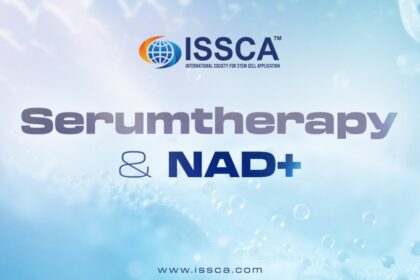
NAD (Nicotinamide adenine dinucleotide) and its precursors, commonly known as NAD boosters, are some of the most important molecules on the planet—without them, life would cease to exist. At very high doses, they have been shown to improve the function of various types of cells and tissues throughout the aging body, including the heart, brain, muscles, and stem cells. Clinical studies show that one of the precursors, nicotinamide riboside, can increase NAD levels in white blood cells.
NAD can support cellular processes that contribute to healthy aging. A decline in its levels is not something the body tolerates well. In fact, several signs of aging are directly associated with the lack of NAD+ in the body, such as:
- Loss of proteostasis
- Mitochondrial dysfunction
- Glucose intolerance
- Insulin sensitivity
- Cellular senescence
- Altered epigenetics
This is partly because NAD+ plays a role in maintaining the stability of the human genome, being capable of repairing its own DNA. As we age, DNA damage occurs when cells divide, which mainly contributes to aging signs and the formation of cancers.
Additionally, NAD+ is required for energy production in much of the body, including the brain, immune cells, and muscle tissue. As NAD+ levels decline with age, these parts of the body begin to lose the efficiency they once had.
NAD+ also activates sirtuins, a class of enzymes that influence aging and longevity by acting within the body. They regulate various metabolic processes, including insulin secretion, lipid mobilization, stress response, and lifespan modulation. They also affect circadian rhythms and mitochondrial biogenesis. These enzymes are activated when NAD+ levels increase.
Chronic inflammation and increased immune activation are key factors responsible for the decline in NAD+ levels in the body. As people age, they are more likely to experience these issues, which may partly explain the apparent decline in NAD+ presence in humans.
Energy Metabolism
NAD+ can be synthesized from various dietary sources, such as salmon, lean meats, legumes, and nuts, but these only provide a small portion of what the human body truly needs. The main source comes from a recycling mechanism known as the salvage pathway.
NAD+ participates in reduction and oxidation processes, often referred to as redox reactions. These convert the oxidized form of NAD (NAD+) into its reduced form NADH—a crucial process for glucose and fatty acid metabolism and ATP formation.
As NAD levels gradually decline with age, this can manifest through the following issues, along with increased risk of neurodegenerative diseases and infections:
- Decreased autophagy
- Increased DNA damage
- Increased mitochondrial dysfunction
- Metabolic imbalance
However, there are things people can do to increase the amount of available cellular NAD+, and these actions are entirely independent of age:
- NAD+ increases during fasting and exercise.
- Increased NAD+ levels in animal studies have been associated with longer lifespan in those animals.
There are several practices that can have a practical effect on NAD+ levels in the body when used in combination:
- Fasting, caloric restriction, and exercise: Activities that cause energy stress in the body are very effective at boosting NAD+ levels.
- Consuming foods high in tryptophan or nicotinic acid are other ways to increase NAD+ levels, although this alone may not produce the profound effect some patients are seeking.
However, because the demand for this molecule is so high within the body, the organism relies on another way to produce it through a recycling system known as the Salvage Pathway. This pathway recycles nicotinamide, which is released when enzymes use NAD+. That nicotinamide is converted into nicotinamide mononucleotide, and then into NAD+. However, this process is subject to feedback inhibition by NAD+ levels in the body, meaning that if NAD+ levels are too high, this recycling process will shut down.
NAD boosters in supplement form can be tolerated at high doses and may effectively raise NAD+ levels. There is also evidence suggesting they help improve conditions associated with aging.




